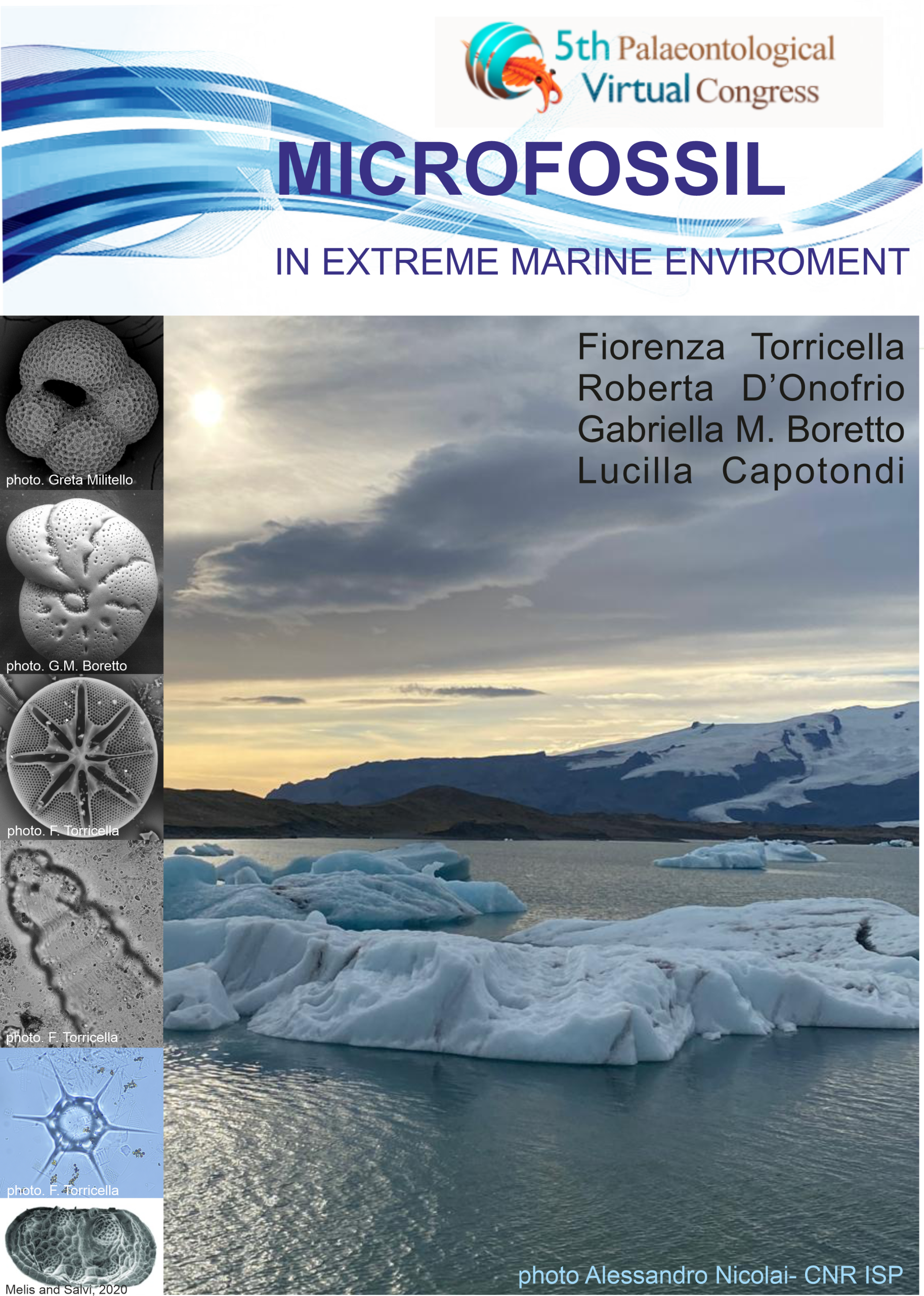Microfossil in extreme marine enviroment

AUTHORS
Fiorenza Torricella
Institute of Polar Science, CNR, Bologna, Italy
torricellafiorenza@gmail.com
fiorenza.torricella@isp.cnr.it
Roberta D’Onofrio
Marine Science Institute, CNR, Venice, Italy
Roberta.donofrio@cnr.it
Gabriella Margherita Boretto
Institute of Polar Science, CNR, Bologna, Italy
gmboretto@gmail.com
gabriella.boretto@isp.cnr.it
Lucilla Capotondi
Istituto di Scienze Marine, CNR, Bologna, Italy
lucilla.capotondi@cnr.it
Abstract
In a changing world, with rising atmospheric and ocean temperatures largely driven by human activities, the development of extreme conditions has become a pressing societal concern. Extreme marine environments are characterized by hostile conditions, which compel organisms to develop unique survival strategies and occupy specific ecological niches. Various regions can be classified as extreme environments, including: polar areas experiencing sea ice cover and brine formation, vent ecosystems such as the hot deep-sea hydrothermal vents or cold seeps and mud volcanoes, but also extremely oligotrophic or eutrophic settings, anoxic and contaminated areas. The study of time and spatial evolution of these environments through/by means different groups of microfossils such as diatoms, radiolarians, silicoflagellates, calcareous nannofossils, foraminifera, and ostracods provide insights into climate and environmental future perspective.
Key Questions for Future Research: What potential do microfossils hold for the studying of global change? What tools and methodologies are the best suited for investigating various environmental conditions? By addressing these questions, we can enhance our understanding of extreme marine environments and their implications for both ecosystems and society at large.
We encourage to submit to this session contributes that cover the following topics:
- Paleoecological Reconstruction: Using microfossils alongside various paleo proxies derived from marine records across different geological periods and regions.
- Systematic Taxonomy of Microfossils: Emphasizing the importance of this tool in paleontological, taphonomic, stratigraphic and geochemical researches.
- Application of Proxies: Exploring the applicability of diverse proxies and their relevance and/or limits in enhancing our understanding of recent and past environments.
- Development of New Proxies: Using new proxies and analysing their potential applications in paleoecological research.
